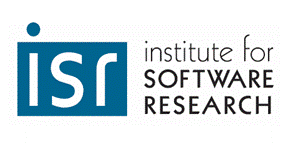
Institute for Software Research
School of Computer Science, Carnegie Mellon University
Looking under the Hood of Stochastic Machine Learning
Algorithms for Parts of Speech Tagging
Jana Diesner, Kathleen M. Carley
July 2008
Center for the Computational Analysis of
Social and Organizational Systems (CASOS) Technical Report
Supercedes CMU-ISR-08-131
A variety of Natural Language Processing and Information Extraction tasks,
such as question answering and named entity recognition, can benefit from
precise knowledge about a words' syntactic category or Part of Speech (POS)
(Church, 1988; Rabiner, 1989; Stolz, Tannenbaum, & Carstensen, 1965). POS t
aggers are widely used to assign a single best POS to every word in text data,
with stochastic approaches achieving accuracy rates of up to 96%
to 97% (Jurafsky & Martin, 2000). When building a POS tagger, human beings
need to make a set of choices about design decisions, some of which
significantly impact the accuracy and other performance aspects of the
resulting engine. However, documentations of POS taggers often leave these
choices and decisions implicit. In this paper we provide an overview on
some of these decisions and empirically determine their impact on POS tagging
accuracy. The gained insights can be a valuable contribution for people who
want to design, implement, modify, fine-tune, integrate, or responsibly use
a POS tagger. We considered the results presented herein in building and
integrating a POS tagger into AutoMap, a tool that facilitates
relation extraction from texts, as a stand-alone feature as well as an
auxiliary feature for other tasks.
35 pages
Return to:
SCS Technical Report Collection This page maintained by [email protected]
School of Computer Science homepage